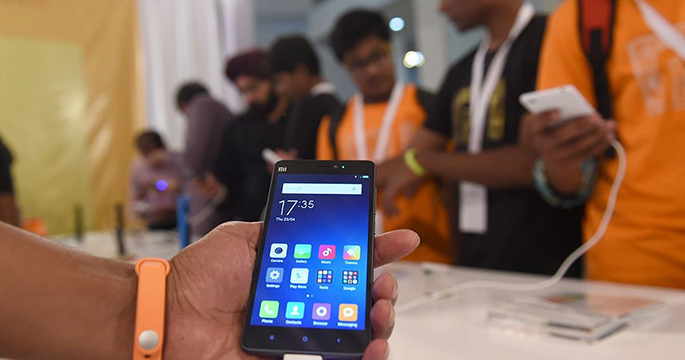Leaders of Chinese smartphone sector halt all production in India due to coronavirus pandemic

Xiaomi Corp, Oppo and Vivo, among other major Chinese vendors of Android smartphones, have stopped all production in their plants in India due to a nationwide lockdown that aims to prevent the spreading of the coronavirus.
The lockdown, announced by Prime Minister Narendra Modi, is slated to last 21 days, starting at 00:00 on Tuesday, and is expected to result in a drop on India’s smartphone market (the world’s second largest after China) in 2020, as companies comply with the order and domestic sales currently decline, analysts say.
Main iPhone assemblers (Wistron Corp and Foxconn Technology Group), along with South Korea’s Samsung Electronics and LG Electronics have also closed down their plants temporarily in India in line with the government’s directive.
“In the worst-case scenario, the Indian smartphone market could see a 4.2 per cent decline in 2020,” said Canalys VP of mobility advisory services Nicole Peng.
The expected slowdown in India, where according to Canalys estimates, smartphone shipments increased 8% to 148 million devices in 2019, may be a greater worry for China’s major Android smartphone vendors, which are the market leaders. They have already been troubled by the declining economy and fragile consumer spending in domestic markets, due to China’s prolonged trade war with the United States and further intensified by the coronavirus pandemic.
Global smartphone shipments tumbled 38 per cent to 61.8 million units in February because of the public health crisis, as factories in China were shut down and consumer demand plunged because of the government’s tight travel and transport restrictions, according to data from research firm Strategy Analytics. Smartphone factories in China have slowly restarted operations this month, as the coronavirus crisis eased up.
A spokesperson for telecom equipment giant Huawei Technologies, the second largest smartphone vendor in the world, declined to comment on the situation in India. Huawei was among the first Chinese smartphone brands to have its devices assembled there, in partnership with Flex, an electronics contract manufacturing company.
Xiaomi global VP Manu Kumar Jain, who is also the managing director at Xiaomi India, did state in an open letter that its production facilities in India have been closed, due to the general lockdown announced by the government. The company informed that these operations, its corporate offices, service center and Mi Home stores, will all be closed until the state provides further guidance.
The Hong Kong-based company has over 1,000 staff in its Bangalore headquarters and five regional Indian offices. Foxconn, or, officially, Hon Hai Precision Industry, also makes some of the Xiaomi smartphone models in India.
A statement from Oppo India informed that its factory in Greater Noida, a city in the Gautam Buddh Nagar district of the northern Indian state of Uttar Pradesh, is temporarily shut down, and that all of its staff are working from home.
Vivo India, which has launched the work-from-home operations on March 23, stated that production at its plant in Greater Noida will be suspended until April 15, as claimed in an email from the company spokesman.
Canalys’ Peng suggested that a temporary stop in manufacturing in India may have been expected by China’s major smartphone companies ahead of the government’s announcement. “Given their previous experience in China, these smartphone makers should have been more prepared,” she said.
Xiaomi has established itself as the most popular smartphone brand in India since 2018. It had a 28% market share last year, with Samsung, Vivo, realme and Oppo close behind, as Counterpoint Research data confirms.
Peng said that “best-case scenario [for India’s smartphone demand] is a 3.2 per cent year-on-year growth” after manufacturing is restored after the lockdown, and consumption follows a month later.
As of March 24, there was a total of 519 confirmed cases of Covid-19 in India, including nine deaths and 40 discharged patients, according to the WHO.
Source